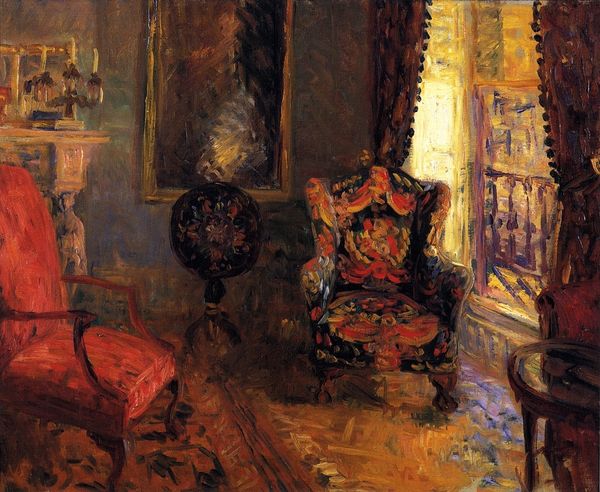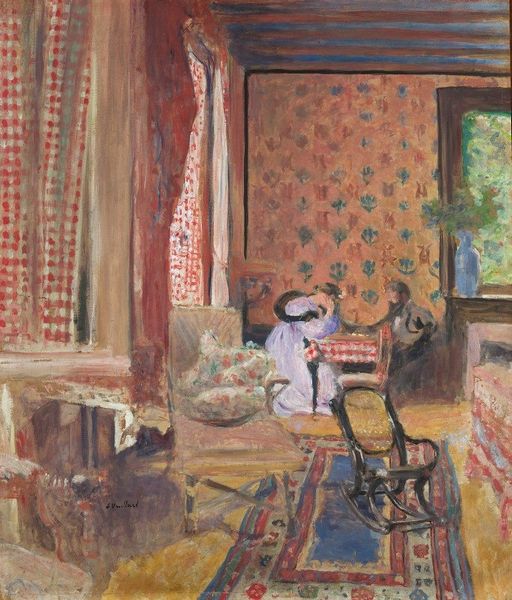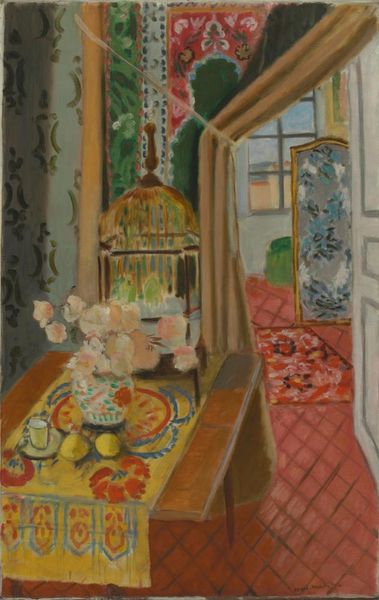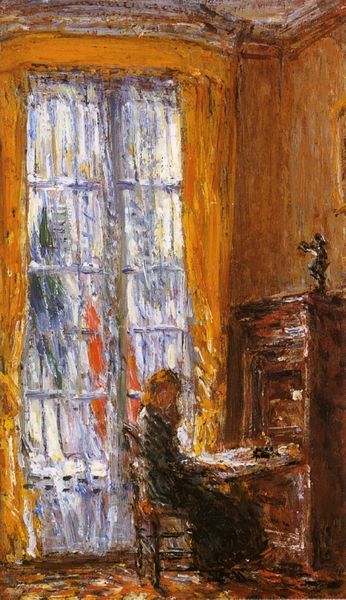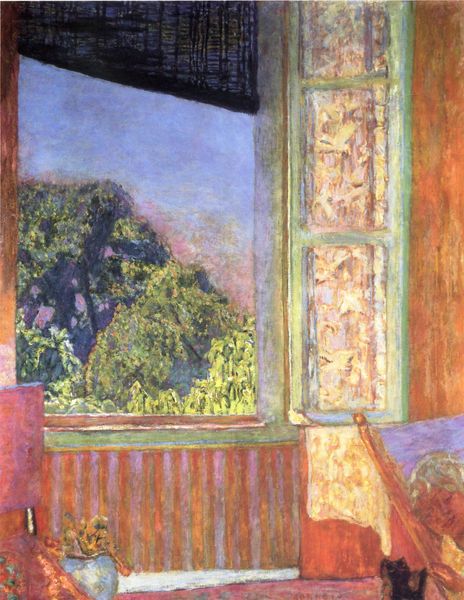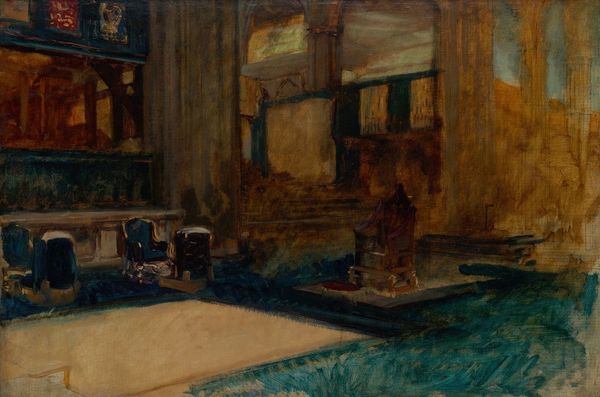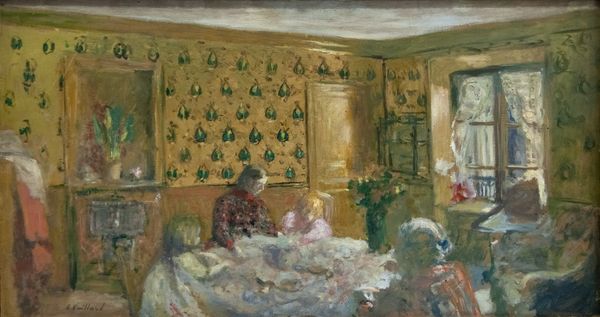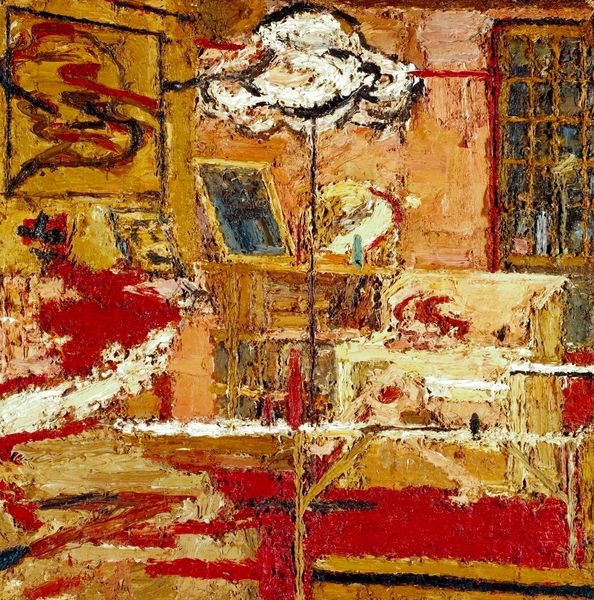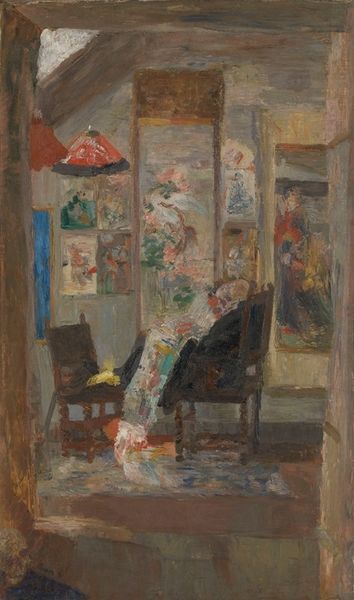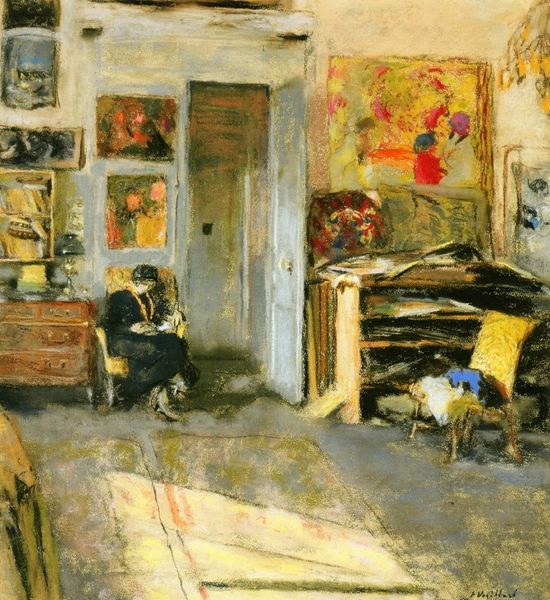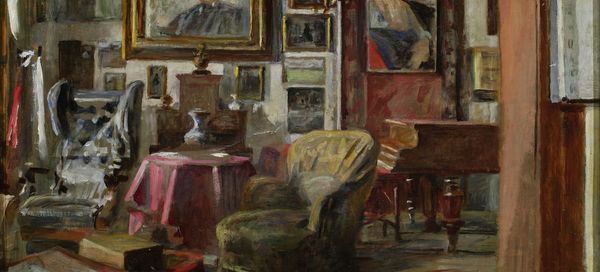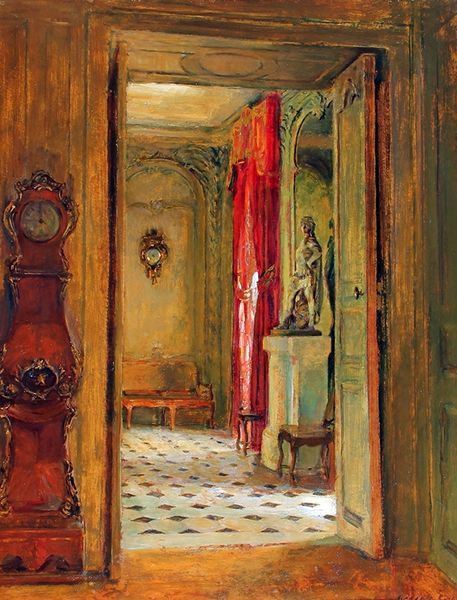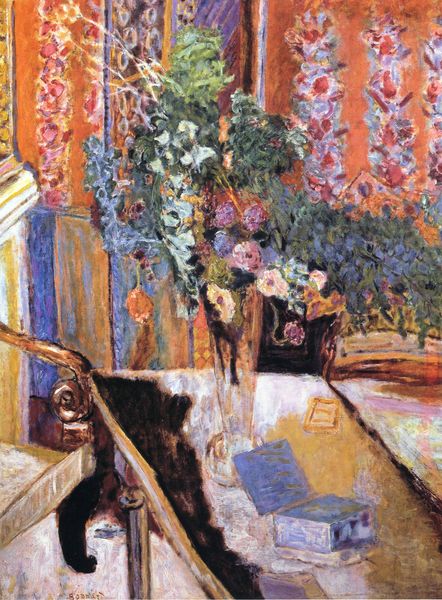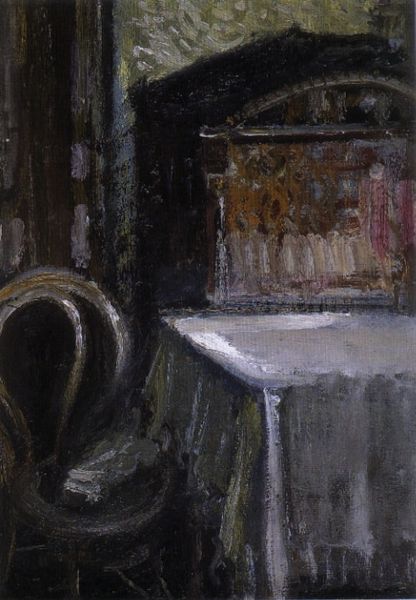
painting, oil-paint, textile
#
painting
#
impressionism
#
impressionist painting style
#
oil-paint
#
textile
#
oil painting
#
intimism
#
geometric
Copyright: Public domain
Editor: So, here we have Bonnard’s "White Interior," an oil painting rendered in what appears to be an impressionistic style. It depicts an interior scene with a table set for tea, bathed in a soft, diffuse light. What stands out to me is the tactile quality of the paint and the way it evokes a sense of domesticity. What catches your eye in this piece? Curator: Immediately, the texture. Look at how Bonnard applies the paint. Thick, almost sculptural in places. This wasn’t just about representing light, as with conventional impressionism; it was about the materiality of the paint itself and the labor involved in creating this domestic space. The repetitive strokes build up the surface, transforming everyday objects—a table, a chair, a teapot—into constructed realities. Notice also how the textiles interplay with the domestic space and challenge any sort of class divide within painting. Editor: I see what you mean. It’s almost like the paint itself becomes another layer of textile, contributing to that sense of lived-in space. How does this emphasis on materials connect with the broader art world at the time? Curator: The late 19th and early 20th centuries saw a growing fascination with craft and the handmade. Think about the Arts and Crafts movement. Bonnard, while associated with Post-Impressionism, shared this interest in elevating everyday objects and the labor of their creation to the level of fine art. By focusing on the tactile quality of paint and depicting commonplace scenes, he blurred the boundaries between high art and the crafts traditionally associated with the domestic sphere. Even things like the labor of constructing geometric elements is hidden in plain sight by the soft nature of the application of color. Editor: That makes sense. So, it's not just about what is depicted, but also about how it's made and what that process signifies. Curator: Precisely! This artwork pushes us to consider the socio-economic implications of materials, labor, and consumption within the context of artmaking. Editor: That really opens up my understanding. I initially saw it as a simple domestic scene, but now I recognize a deeper commentary on the value of craft and everyday life. Curator: And I’ve enjoyed reconsidering Bonnard’s position relative to both the Impressionists and the burgeoning crafts movement.
Comments
No comments
Be the first to comment and join the conversation on the ultimate creative platform.
